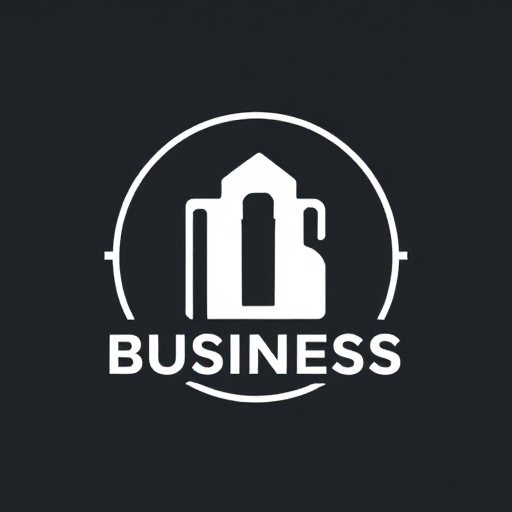Low-Cost Business Branding with Graphic Design

Branding is one of the most crucial elements in establishing a successful business. It helps shape how your audience perceives your company and sets you apart from competitors. However, creating a strong brand often requires a significant budget for high-quality design, marketing campaigns, and overall brand strategy. Fortunately, with the rise of digital tools and freelance services, businesses of all sizes can achieve impactful branding without breaking the bank. In this article, we will explore how to execute low-cost business branding with graphic design, focusing on cost-effective strategies, tools, and tips.
What is Business Branding?
Business branding is the process of creating a unique identity for your company. It goes beyond just a logo; it encompasses everything that communicates your company’s values, mission, personality, and promise to your target audience. This includes your business name, logo, color palette, typography, website design, social media presence, and any other visual assets you use in your marketing efforts.
Effective branding creates recognition, builds trust, and fosters a connection with your audience. Strong branding leads to loyalty and can even drive word-of-mouth marketing. But how can small businesses or startups achieve this without a huge budget? The answer lies in leveraging affordable graphic design techniques and resources.
Why Graphic Design Matters for Branding
Graphic design is central to branding because it communicates your business’s identity visually. The design elements you use—logos, fonts, colors, packaging, and website design—tell a story about who you are and what you stand for. Great design makes your brand memorable, professional, and appealing. When executed well, it helps you stand out in a crowded market.
Here’s why graphic design is essential for branding:
- First Impressions Matter: People form opinions about a brand within seconds of interacting with it. Effective design ensures your business makes a strong, positive first impression.
- Consistency: Consistent design across all your brand touchpoints (website, social media, advertising, etc.) builds a cohesive brand identity.
- Recognition: Strong visual elements such as logos, colors, and typography help customers recognize your brand at a glance.
- Trust: Professional and polished design fosters credibility, encouraging people to trust your business.
Low-Cost Business Branding Strategies Using Graphic Design
Branding doesn’t need to be expensive. Here are several low-cost strategies to achieve effective branding using graphic design:
1. Create a Strong Visual Identity with Simple Design
When it comes to graphic design, simplicity often wins. A clean and minimalist design can be just as impactful as a more intricate one, and it’s much cheaper to create and maintain. Focus on these key design elements:
- Logo Design: Your logo is the most recognizable part of your brand. Opt for a simple, memorable logo that reflects your company’s mission and personality. You don’t need an expensive designer to do this. Many online logo design tools such as Canva, Looka, or Hatchful allow you to create a professional logo for free or at a low cost.
- Color Palette: Choose a few key colors that represent your brand’s values and appeal to your target audience. A simple color scheme (2-4 colors) can go a long way. Tools like Adobe Color or Coolors can help you select a cohesive and visually appealing palette.
- Typography: Choose 2-3 fonts that are easy to read and complement each other. Avoid using too many different fonts, as this can confuse your audience. Google Fonts offers a wide variety of free, high-quality fonts for businesses.
2. Leverage Free or Low-Cost Graphic Design Tools
There are a variety of free and affordable graphic design tools available that can help businesses create professional-looking branding materials without a designer’s fee:
- Canva: Canva is a user-friendly platform with a vast collection of templates, design elements, and fonts. You can design everything from social media posts to business cards, brochures, and logos. It’s free to use with the option to upgrade to a Pro account for more advanced features.
- Crello: Similar to Canva, Crello provides free access to templates, stock photos, animations, and other design elements. It’s perfect for creating marketing materials such as banners, flyers, and social media content.
- Figma: Figma is an excellent collaborative design tool. While it’s a bit more advanced, it offers free plans for teams and individual users. It’s great for web and app design, as well as prototyping.
- Inkscape: For more advanced vector-based designs, Inkscape is an open-source alternative to Adobe Illustrator. It’s a great option for businesses on a tight budget that still need professional design capabilities.
3. Use Templates and Pre-Made Assets
Templates can be a lifesaver when you’re trying to create a professional brand without spending too much money. Numerous websites offer free or inexpensive templates for logos, social media posts, and marketing collateral:
- Envato Elements: With a subscription, you get access to thousands of templates for various branding materials, including social media graphics, brochures, flyers, and more.
- Creative Market: This site offers affordable, pre-made graphic assets such as logo templates, fonts, and icons that can be easily customized.
- Etsy: Many designers sell inexpensive templates for business branding, including logos, business cards, and promotional materials.
Using templates saves both time and money while still allowing you to customize the design to fit your unique brand.
4. Outsource to Freelancers
Hiring a full-time designer can be expensive, but freelancers can offer affordable graphic design services. Websites like Fiverr, Upwork, or 99designs allow businesses to connect with talented designers at a variety of price points. When outsourcing, look for freelancers with strong portfolios and positive reviews.
To keep costs low:
- Provide clear guidelines: The more specific you are about your branding needs, the less time the designer will need to spend on revisions, which can drive up costs.
- Negotiate: Many freelancers offer packages or discounts for long-term projects, so don’t hesitate to negotiate the price.
- Use design contests: Platforms like 99designs allow you to run a design contest, where multiple designers submit their ideas, and you only pay for the one you choose.
5. Focus on DIY for Social Media and Website Design
Social media is a powerful tool for brand promotion, and you don’t need to spend much to create eye-catching posts. Use tools like Canva, Crello, or even Adobe Spark to create social media content and graphics for your posts and ads.
For your website:
- Website builders: Platforms like Wix, Squarespace, or WordPress offer affordable website templates that are easy to customize with your brand’s visual identity. These platforms also provide tools for creating logos, banners, and other assets.
- Stock Photos: Websites like Unsplash, Pexels, and Pixabay offer free high-quality stock images that can help elevate your website or social media posts without the need for a professional photographer.
6. Consistency is Key
Consistency in branding is critical for building recognition and trust. Once you have your logo, colors, and typography in place, apply these design elements uniformly across all your branding materials. This includes:
- Business cards
- Social media profiles
- Email newsletters
- Website
- Packaging and merchandise
- Advertising materials
By using consistent design across all platforms, your brand will become more recognizable, even on a small budget.
Branding your business on a budget is absolutely achievable, and graphic design plays a pivotal role in making your brand stand out. By utilizing free or affordable design tools, templates, and outsourcing to freelancers, you can create a professional and memorable brand identity without spending a fortune. Focus on simplicity, consistency, and leveraging the power of digital tools, and your business will have the visual identity it needs to succeed. Remember, a strong brand is about more than just how things look—it’s about how people feel when they interact with your business.






